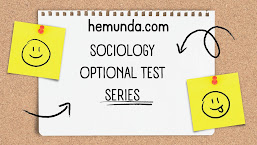BASICS OF CHILD DEVELOPMENT
How Life Begins:
1. Fertilization- At first due to the fusion of sperm with an ovum, fertilization occurs, a Zygote is formed and placed in the fallopian tube of the woman which is gradually carried into the uterus with the beginning of conception, generally indicated by a delayed or missed menstrual period within 2-3 weeks.
2. Germinal Period- It lasts for the first two weeks. During this period, the fertilized egg develops by a process of cell division with a hollow sphere of cells, about 1/5 of an inch in diameter.
3. Embryonic Period- It lasts for about Eight weeks The primitive structures of the individual slowly begin to form. By the end of the 8th week, the Heart begins to beat, the internal organs take shape and external physical features assume definite form even though the embryo is about 1/4" to 2" long.
4. Foetal period- It extends from the 8th week till birth. The entire term between conception and birth(normally 38-40 weeks) is called the prenatal period. During this period, the organism is enclosed in a sac attached to one side of the mother's uterus and filled with amniotic fluid., which equalizes pressure on the embryo. The embryo gets nourishment through the umbilical cord from the placenta, received oxygen from the mother's bloodstream, and passes waste materials into the mother's blood.
Stages of Pre-Natal Growth and Development:
1. 1st month- Within 10 days after conception, the fertilized egg implants itself inlining of the uterus. Within 2-3 weeks after conception, missed period occurs.
2. 2nd month- Embryo is 1" long & weighs 40-50 gms. It loses its tail, gets a face, a brain, Neck, some bones, fingers, toes, and internal organs.
3. 3rd month- Sex emerges.
-Tooth buds sprout, Ears are formed.
- Fingers and Toe Nails appear.
-Liver, Kidney, Stomach begin to work.
-Mouth, Jaw, and Nose are fully developed.
4. 4th month- Foetal movements begins
- It is about 3"-4" long &weighs 200-300gms.
-Heartbeats are stronger
-Brain wrinkles appear.
-External sex organs differentiate into male/female.
- Eyebrows, eyelashes are formed.
5. 5th month- Real hair appears on the head.
-Fingernails and toenails grow.
-Sebaceous & sweet glands & other internal organs are developed further.
- It is about 1 foot long & weighs 500-600gms.
6. 6th & 7th month- Eyes open, Trunk lengthens & Back straightens-weighs 1000gms.
- In males, testes descend into scrotum.
-BONES are visible on the X-ray screen.
- Other internal organs settle into proper places.
7. 8th & 9th month- Infant gains much weight & strength.
-Its screen color improves and darkens.
- Blood vessels are no longer shown through the skin.
- Foetus is now 10-20 inches long and weighs about 3kg.
-Baby is born at 280 days or 40 weeks 9 months ± 7 days.
Factors Affecting Pre-Natal Growth:
1. Emotional factors- Emotional disturbances in the mother can produce chemical changes causing structural and psychological abnormalities in the developing fetus. i.e Anxiety during pregnancy causes increased crying of newborns.
2. Improper medication- Drugs taken during pregnancy may pass through the placenta & affect the fetus; hence to be taken in consultation with a physician.
3. Smoking- Heavy smoking leads to premature delivery causing severe handicap of the infant.
4. Radiation- Numerous Abnormal X-rays of the developing fetus & not recommended for 1st 4 months of pregnancy.
5. Diseases- Certain diseases and infections may pass on to the fetus.
6. Accidents- Any accidents/ undue strain may result in antepartum hemorrhage causing malformations, fetal death, or premature delivery.
7. Birth Injury- Forcep / Instrumental delivery may cause birth injury, Brain damage leading to mental retardation of the body, or may lead to Toxaemia or Miscarriage.
Role of Genetic & Environmental Factors:
Hereditary factors- This refers to inborn physical and mental traits inherited by birth; the inborn qualities & potentials the child already possess before he enters the physical world- the Nature part.
- The Particular combination of Genes in the chromosomes of the new organism sets the limits and general direction of human development. i.e Physical growth- Tall/short, Complexion, Intelligence, etc.
Environmental Factors- It also affects the physical &mental development of the child.
-The home, the family, the friends, the neighborhood, school, etc influence the development of an individual.
-It is the Nurture part of an organism's life. i.e Diet, health care, personal hygiene, parental behavior, etc play very important part in personality development; especially in the first 6 years of life.
- The ways in which his needs & wants are satisfied, the materials by which he is stimulated, the language spoken, the attitudes displayed towards him, the inter-relationship among the people around him exert a continuous impact on him.
- By this, the habit patterns are developed & also the attitude towards life self & others.
- How far the inherited potentials are exploited & developed, are all determined by the environment.
Thus, heredity & Environment, both play an important part in the development of an individual. Both are complementary. Traits are not exclusively hereditary or environmental.
Development has been defined as a process resulting from a constant flux or interchange of energies within an organism and energies within its environment.
No growth is possible without some stimulation & No development is conceivable without an environment. With the same set of genes, the different environmental conditions may induce the production of diverse characteristics.
Sample Lecture From the Author
Previous Years' Questions from this topic:
1. Substantiate the importance of genetics and environmental factors on the different facets of human development.- 20 marks, 2019.
2. Highlight the factors affecting the different stages of prenatal growth and development.- 20 marks, 2019.
3. Enumerate the role of genetic and environmental factors affecting human development.- 20 marks, 2018.
4. Influence of genetic and environmental influences on health and disease.- 5 marks, 2017.
5. Explain how nature and nurture both influence the development of an individual.- 20 marks, 2016.
6. Write an essay on" Genetic endowment and environmental plays a pivotal role in human development".- 20 marks, 2015.
7. How do genetics and environment interact in influencing child development? Cite relevant examples from different areas of development to support your answer.- 20 marks, 2011.
8. Elaborate in detail the factors contributing towards the development of the human baby.- 20 marks, 2006.
9. Development is a process of interaction between heredity and the environment. Explain it with support of research evidence.-20 marks, 2006.
10. Explain how hereditary endowment takes place. Discuss the role of heredity and environment on growth and development.- 60 marks, 2000.
11. Define 'development', Explain the characteristics of development.- 60 marks, 2000.







































0 Comments
please do not enter any spam link in the comment box.